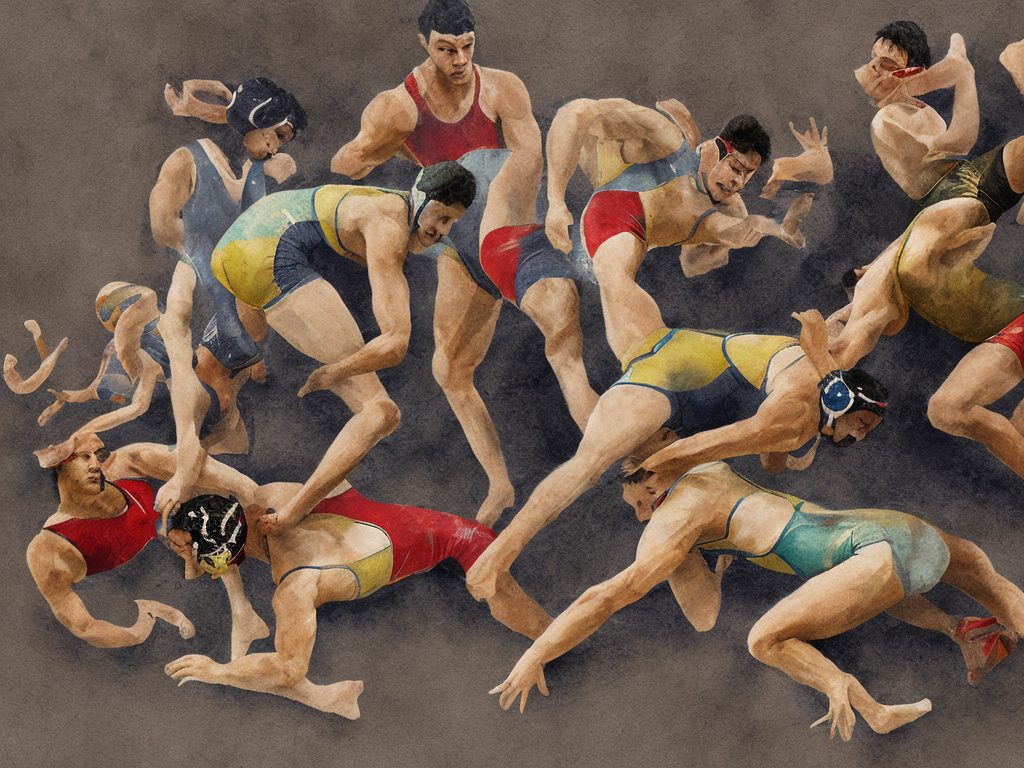
The sport of wrestling has a long and storied history, dating back thousands of years to ancient Greece and Rome. Today, it is recognized as one of the most exciting and challenging sports in the world. There are different styles of wrestling that are practiced around the globe, with two of the most popular being Greco-Roman and freestyle wrestling. While these two styles share many similarities, there are also key differences that set them apart. In this article, we will explore the difference between Greco-Roman and freestyle wrestling.
Greco-Roman wrestling is a style that originated in ancient Greece and was later adopted by the Romans. It is the older of the two styles, with a history that spans over 2,000 years. In Greco-Roman wrestling, only the upper body can be used to attack and defend. Wrestlers are not allowed to grab or attack their opponent's legs or use their own legs to trip or sweep their opponent. This means that all takedowns, throws, and holds must be executed using the arms, chest, and torso. Greco-Roman wrestling places a heavy emphasis on throws and upper body strength, as wrestlers must rely on their skills and strength to execute successful takedowns.
On the other hand, freestyle wrestling is a relatively newer style compared to Greco-Roman wrestling. It was developed in the early 20th century and has become immensely popular across the globe. Unlike Greco-Roman wrestling, freestyle wrestling allows both the upper and lower body to be used for attacking and defending. Wrestlers can grab their opponent's legs, trip them, and execute takedowns using their legs. This makes freestyle wrestling more dynamic and versatile than Greco-Roman wrestling. It requires wrestlers to have a strong foundation in both upper and lower body techniques and puts a greater emphasis on agility and explosiveness.
Another key difference between Greco-Roman and freestyle wrestling is the scoring system. In Greco-Roman wrestling, points are awarded based on successful takedowns, throws, and holds. If a wrestler successfully executes a takedown, they are awarded two points. If they execute a throw where their opponent's feet go above their head, they are awarded five points. If they successfully execute a hold and pin their opponent's shoulders to the mat, they are awarded two points, and the match is over. However, if there is no pin, the match is divided into two three-minute periods, and the wrestler with the most points at the end of the match is declared the winner.
In freestyle wrestling, the scoring system is more complex and allows for a wider range of techniques. A wrestler can score points by executing a takedown, throwing their opponent to the mat, or exposing their opponent's back to the mat. A successful takedown is worth one point, while a successful throw is worth four or five points, depending on the technique used. If a wrestler exposes their opponent's back to the mat, they are awarded two or four points, depending on how long the exposure lasts. Similar to Greco-Roman wrestling, the match is divided into two three-minute periods, and the wrestler with the most points at the end of the match is declared the winner.
The rules and regulations governing Greco-Roman and freestyle wrestling also differ. Greco-Roman wrestling does not allow any leg attacks or the use of the legs for tripping or sweeping. Wrestlers are required to have a tight clinch or hold on their opponent's body at all times during the match. In freestyle wrestling, leg attacks and the use of the legs for tripping or sweeping are allowed. Wrestlers have more freedom of movement and can use a wider range of techniques to score points.
Furthermore, the uniforms, or singlets, worn by wrestlers in Greco-Roman and freestyle wrestling are also different. In Greco-Roman wrestling, wrestlers wear singlets that cover their entire bodies, including their legs. This is because they are not allowed to use their legs for attacking or defending. In freestyle wrestling, wrestlers wear singlets that cover their upper body but leave their legs exposed. This allows wrestlers to use their legs for attacking and defending.
In conclusion, Greco-Roman and freestyle wrestling are two distinct styles of wrestling that have their own rules, techniques, and scoring systems. Greco-Roman wrestling is the older style and only allows the use of the upper body for attacking and defending, while freestyle wrestling allows both the upper and lower body to be used. Greco-Roman wrestling focuses on throws and upper body strength, while freestyle wrestling is more dynamic and versatile. The scoring systems and uniforms also differ between the two styles. Regardless of the style, wrestling is a sport that requires strength, technique, and mental toughness, making it a truly unique and exhilarating sport.
 Self-Instruct
Self-Instruct